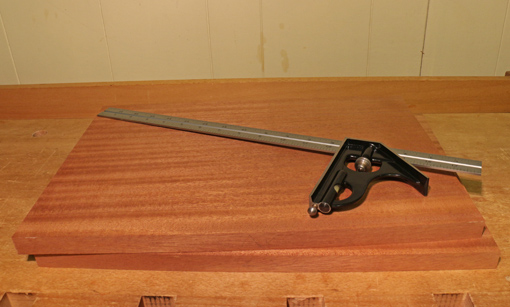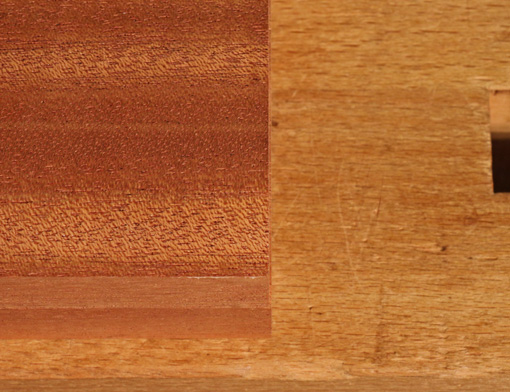
One of the most difficult aspects of learning and refining craftsmanship is understanding and sensing when something is just enough and not too much.
Consider sharpening a plane blade: sharper is better, at least within a practical range. However, the camber in the edge is a subtle quality – too little and too much are both detrimental to function. The craftsman must understand the purpose of camber for the particular type of plane at hand, as well as have a visual and tactile sense of when the amount is good.
In drawer fitting, proper preparation of the carcass is essential to good results. For this, we must go beyond the simplistic idea that it should be as square as possible, if for no other reason than achieving perfectly square is impossible, and thus we must understand how to bias the imperfection.
It will be much easier to fit a fine drawer with a nice action if the carcass interior is a bit wider at the back than at the front. It must never narrow in width toward the back. Different carcass types – solid wood, frame and panel, a table with drawer guides, etc. – will dictate different ways to create this adjustment, but there is always a way.
We are faced with the matter of “a little bit.” It is sweet for a drawer, especially a smaller one, to have an easy pull to start, then tighten against the sides of the opening as it is almost fully withdrawn. Conversely, it is a sour drawer that gets pinched at the back as it is almost fully pushed in, while the front is excessively loose in its opening. It just doesn’t seem happy to be there.
In building a small jewelry chest of drawers with a solid wood carcass with an opening about 16″ wide and 11″ deep, I incorporated the necessary tweak by shooting the end grain of the top and bottom pieces slightly out of square. I would not normally measure the amount. Instead, I work by feel and eye to get a sense of just enough width that will allow the drawer to move unencumbered in its housing after an initial struggle to enter it.
“But Rob,” you say, “enough is enough already! How much?”
OK, OK, I measured it using shims. The sides are each out of square by about 0.007″ over the 11″ depth, for a total difference between the front and back interior width of just under 1/64″.
More important, I think that will be just enough but not too much.

Pictured above: a direct comparison between the front and back widths.


When you shot the top and bottom of the carcase were you planing to a knifed line that reflected that difference of out of square?
Hey Tico,
Nah, I just counted shavings and checked, but it does seem like planing to a carefully knifed line would work too.
Rob
hello rob – just making sure i see the pic correctly at the bottom of your post: I believe i see two pieces of wood laid atop one another, they appear to be mahogany and rest on the bench (square dog hole on right). the bottom one appears to be a hair longer.
are these pieces making up the back and front of the drawer?
for the top/bottom of the carcass, did you shim the shooting board somehow? Sorry, i’m a tyro, but I love your technique posts! thanks for posting them up!
-Adam of Oakland, CA
Adam,
Thanks for reading and for the kind words.
I should have explained that photo better.
Those pieces are the top and bottom of the carcass. I aligned a front edge with a back edge on the left side (outside of the photo frame). The slight discrepancy at the right side (in the photo) is the difference between those lengths.
In other words, in the interior of the carcass, the back will be just that much wider than the front – about 1/64″.
A small difference, but it really matters. The drawers series elaborates on this. Also, see Fine Woodworking #224. This post was just to give a sense of how much is “a little bit” for this.
Rob